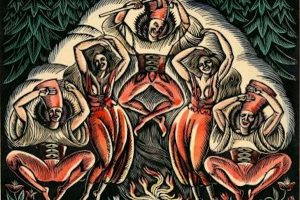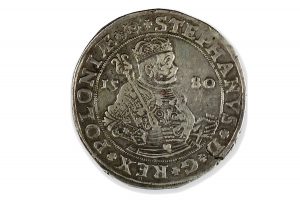The Poster and Graphic Design Gallery collects, stores and provides museum items from the field of poster, graphic design and visual communication. In terms of the number of museum items it owns, it is one of the largest collections of the National Museum in Poznań and includes more than 40,000 objects, making it one of the most important museum collections of this type in Poland. The formal beginnings of the Gallery in the museum structure date back to 1968, when a Section of Poster was created on the basis of the occasionally collected around 2000 posters since the beginning of the 20th century. In 1975, the Section was transformed into an independent Poster Department, later renamed in 1991 to the Poster and Design Gallery, which in 2021 took the name Poster and Graphic Design Gallery.Since the beginning, the highest artistic value has been the basic criterion for acquiring works for the collections; the collections were systematically supplemented with the most valuable works from currently published Polish posters and the creation of a collection of modern foreign posters was initiated, and in subsequent years the profile of the collections was expanded to include works from other fields of graphic design by renowned poster designers.
The structure of the Gallery collections is composed of the following groups:
- The Polish Poster Collection, consisting of posters created after 1945, illustrates the directions and trends in this field and excellently documents its importance in art, starting from the phenomenon of the so–called “Polish school of poster“ which arose in the 1950s of the 20th century, with widely documented achievements of its most important representatives (H. Tomaszewski, J. Lenica, R. Cieślewicz, Waldemar Świerzy, J. Młodożeniec), to the accomplishments of the representatives of the next generations of Polish designers and works of the youngest creators, actively reacting to the challenges of the present. The collection also includes more than 300 works created before 1939, illustrating the pioneer stage of the birth of a new artistic discipline in Polish lands at the beginning of the 20th century and its dynamic development in the interwar period.
- The Collection of European and Non-European Posters, with its oldest ensemble of more than 400 works dating back to the turn of the 19th and 20th centuries and its authors such as Alfons Mucha, Thomas Theodor Heine, Ludwig Hohlwein, Juliusz Klinger, Josef Maria Olbrich and Adolphe Mouron Cassandre, has been dynamically expanding since the 1990s due to numerous contacts with foreign cultural institutions (museums, galleries) and poster authors. It is characterized by the representation of the work of leading global creative environments, led by Japanese, Swiss, German and French posters. An important goal of this collection is to document the achievements of the world‘s greatest poster creators, and many world–class designers have an exceptionally extensive representation here, not found in other institutional collections.
- The Collection of Graphic Publications and Stationery which consists of printed replicas of small graphic forms falling into the scope of graphic publishing: among others, postcards, book covers and wrappers, magazines and phonograph records covers, calendars, as well as other small stationery forms with a special occasion character. A separate and distinct collection consists of selected books illustrated according to their graphic and editorial standards.
- The Collection of Graphic Design Surroundings includes works on paper, made with various techniques, including drawings, etchings, silkscreens, collages and workshop graphics, including sketches and poster designs, as well as works at the boundary of many genres, often closer to the sphere of “pure“ art than “utilitarian“, whose authors are famous posterists.
The rich collection is supplemented by a thematic library and the Department of Artistic Life Documentation, which collects documentation of deceased outstanding Polish poster artists: photographs, correspondence, and other archival materials.




